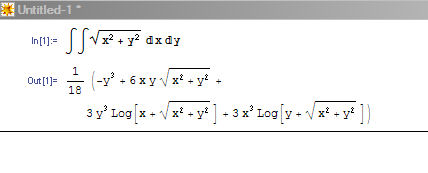Just saw something worth noting. I was on a machine running Office XP and tried to open an Office Open XML (OOXML) formatted document. I don’t know why I tried that, but I did.
Word was smart enough to put up the following dialog:

Now, that is something I hadn’t seen before. I think we all knew that Microsoft was planning a compatibility pack for enabling OOXML on Office 2003 and Office XP. But my 2002 version of Windows XP knows about OOXML? I guess this wisdom must have come down in a previously downloaded Office patch.
In any case, if you click yes, you are directed to this page where you are offered a download of “Microsoft Office Compatibility Pack for Word, Excel, and PowerPoint 2007 File Formats (Beta 2)”. I had the pre-req’s, which included Windows XP SP2 and Office XP SP 3. So downloading a few file conversion filters should be simple and small, right?
Well, simple, but not so small. I was suprised to see that the convertors download was 43MB. That seems a bit large. In comparison, you can download a complete copy of OpenOffice.org, with included support for ODF documents and the Office binary formats, and the entire product is only a 93MB download. The 0.2 ODF Add-in for Word is only 1MB in size. So why does adding OOXML support to Office XP require a 43MB download?
In any case, once it is downloaded and installed, the integration with Office appears seemless. You can open OOXML files from the Windows Explorer by double-clicking on them, you can browse and load them as expected from the File Open dialog in Office, you can re-save files in OOXML format via the File Save, you can create a new document and save it as OOXML, you can even configure Word XP so the OOXML formats are the default format for all saved documents in Word. In fact, you can do all of those things that the Microsoft-supported ODF Add-in is not doing.
As reported earlier, the Microsoft support for ODF puts this ISO standard at a distinct disadvantage, providing no shell integration, removing it from its expected place in the File/Open and File/Save menus, and preventing users from making it the default format in Office.
So, let’s update the file format support matrix:
| Criterion | DOC Format in OpenOffice | ODF Format in Word 2007 | OOXML Format in Word XP |
|---|---|---|---|
| 1. Format supported in default install | Yes. | No. Requires a download and install of separate, unsupported Add-in. | No, but you are prompted to download a free converter pack the first time you attempt to open an OOXML file |
| 2. File Open integration | Yes. | No. ODF is not listed in the default File Open dialog and doing a Control-O will not show ODF documents. However, ODF import is available in a separate menu item elsewhere in the menu system. | Yes. |
| 3. Save new document integration | Yes. | No. In fact no ODF save ability exists in the current version of the Add-in. There is a place holder for the ODF save operation, though it is on its own menu, and would not be shown when doing a simple Control-S to save a new document. | Yes. |
| 4. Can be made the default format | Yes. | No. Although other non-Microsoft formats, such as “Plain Text” can be made the default format, ODF cannot. | Yes. |
| 5. Simple round-tripping | Yes. | No. When an ODF document is loaded, its name is automatically changed and it is made read-only. So loading sampler.odt results in Word having a read-only version of sampler_tmp.docx. Attempting a simple Control-S to save will give an error. | Yes. |
| 6. Shell integration | Yes. | No. | Yes. |
I tip my hat to Microsoft for the way they have provided OOXML support in earlier versions of Office. Aside from the size of the download, the process was simple and the integration was seamless. That’s the way it should be. But what makes them think that customers using ODF format would want anything less than this? That fact that they’ve been able to integrate OOXML so well only increases the shame in having integrated ODF so poorly.




